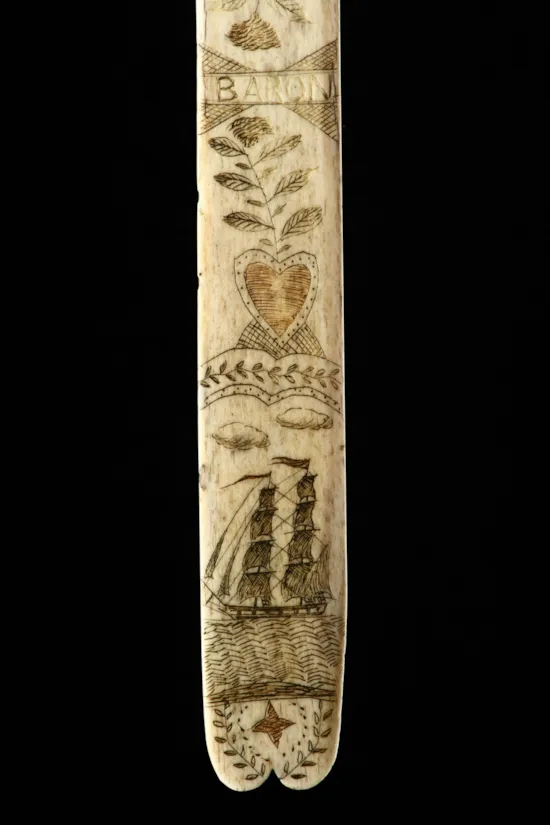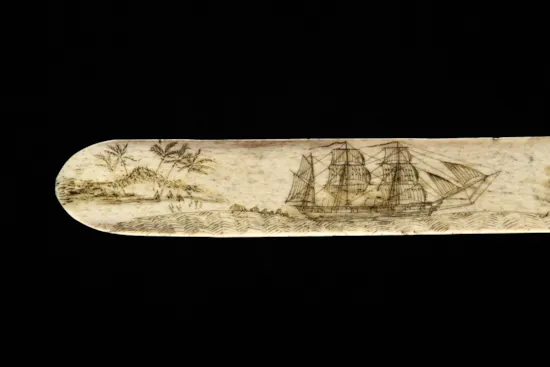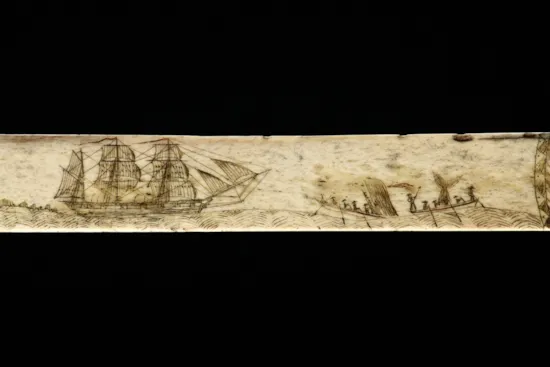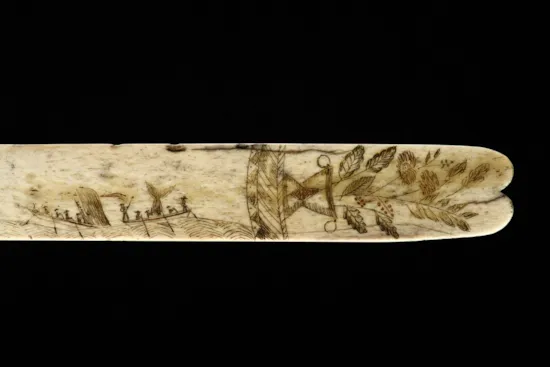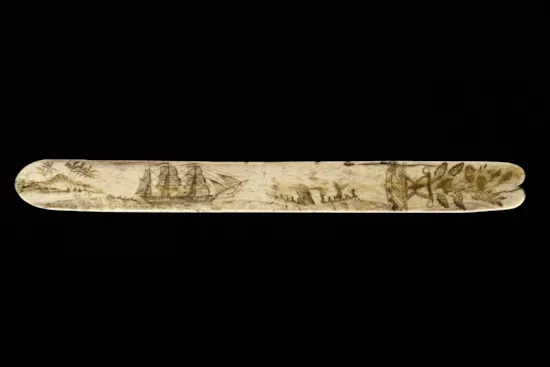American Sailors Scrimshaw Whalebone Stay-Busk
An American Sailors Scrimshaw Whalebone Stay-Busk incised with interesting scenes of a Sperm Whale hunt in progress, red blood spouting from the whale, a whale ship at anchor off the shore of a Pacific Island, perhaps Tahiti, with coconut palms and natives on the beach. A figure of liberty standing beside a shield and anchor flying the stars and stripes, the name Baron to the centre bordered by a patriotic shield and heart both with rose sprigs, the scalloped end with another ship in full sail
Traces of original polychrome throughout fine colour and aged patina
Mid 19th Century
Size: 32cm long, 3cm wide – 12½ ins long, 1¼ ins wide
Traces of original polychrome throughout fine colour and aged patina
Mid 19th Century
Size: 32cm long, 3cm wide – 12½ ins long, 1¼ ins wide
It was the Yankee whalers who first gave the art of engraving whale bone and ivory the name of ‘Scrimshaw’ and it was the publication of Herman Melville’s ‘Moby Dick’ in 1851 which brought the folk art into the literary domain and made its existence known to a wide reading public on both sides of the Atlantic. Melville used the form ‘Skrimshander’ to describe the ‘lively sketches of whales and whaling scenes, graven by fishermen themselves on sperm whale teeth or ladies’ busks wrought out of the right whalebone, and other like skrimshander articles, as the whalemen call the numerous little ingenious contrivances they elaborately carve out of the rough material in their hours of ocean leisure’ (chapter 57).
American Sailors Scrimshaw Whalebone Stay-Busk

SOLD
